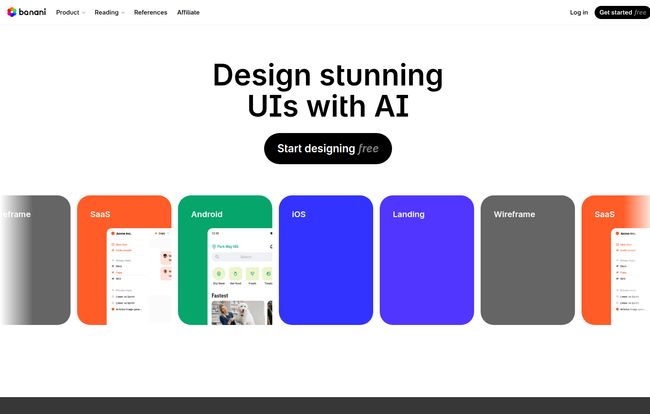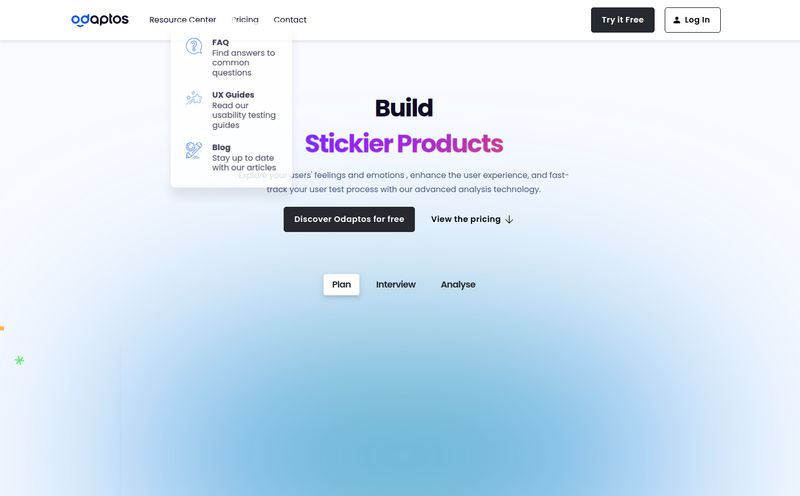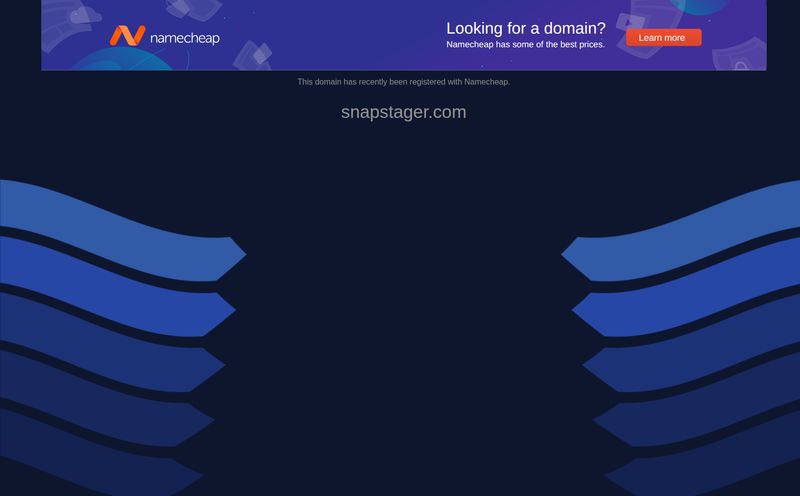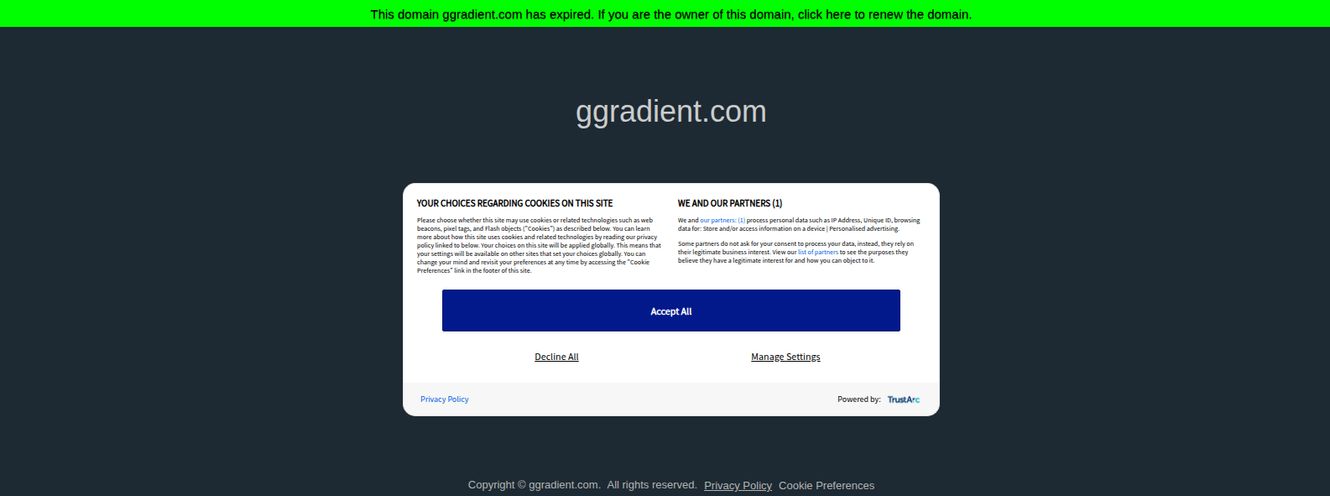Every single week, my inbox is flooded with the “next big thing” in AI. AI for copywriting, AI for SEO, AI for making your morning coffee (I wish). Most of it is just noise. But every now and then, something pops up that makes you lean in a little closer to your screen. This week, that something was a tool called Banani.
The premise is simple, almost deceptively so: you type a description, and it spits out a user interface. A full-on, high-fidelity UI design. It sounds like sci-fi, right? As someone who has spent countless hours arguing over button placement and hex codes, the idea of just… typing my way to a perfect design feels like a cheat code for a game I’ve been playing on hard mode for years. So, naturally, I had to see what was up.
Is Banani the revolution it claims to be, or is it another piece of AI hype destined to fizzle out? Let's get into it.

Visit Banani
So What Is Banani, Really?
At its core, Banani is an AI-powered UI design generator. You feed it a text prompt—something like “a clean, minimalist login screen for a mobile banking app” or “a vibrant landing page for an eco-friendly startup”—and its AI gets to work, generating a visual design based on your words. Think Midjourney, but for app screens and websites instead of surreal cat astronauts.
This isn’t just about making a static image, though. The goal here is to create wireframes, mockups, and even interactive prototypes that you can actually use. It’s designed to bridge that massive gap between a brilliant idea scribbled on a napkin and a tangible design that developers can work with. For founders, marketers, or even developers who don't have a designer on speed dial, this is a pretty compelling proposition.
How Banani Turns Your Words into Designs
The workflow seems incredibly straightforward, which is probably its biggest selling point. It’s not about learning a complex new piece of software with a million toolbars and menus. It’s about conversation.
From Simple Text to Interactive Prototypes
You start with your main idea. The tool claims to be able to whip up multi-screen prototypes in one go. I’ve seen it demoed where you ask for a user onboarding flow, and it generates the welcome screen, the sign-up page, and the profile setup screen all at once. The speed is the real kicker here. We’re talking about turning hours—or even days—of initial wireframing into a task that takes a few minutes. That’s a massive shift in workflow efficiency.
The Magic of AI-Powered Editing
Here's where it gets interesting for me. Getting a first draft from an AI is one thing, but design is an iterative process. Banani leans into this with AI-powered editing. Instead of grabbing a virtual paintbrush, you continue the conversation. “Make the primary button blue.” “Change the font to something more professional.” “Add a section for customer testimonials.” It's like having a junior designer who is incredibly fast, takes direction literally, and never gets tired of your endless revisions. No hurt feelings, just results.
Collaboration and Exporting Made Simple
Once you’ve got something you’re happy with, Banani doesn’t lock you in. You can generate a shareable link to send to your team for feedback. And, crucially, you can export your designs to popular formats. While the site doesn't specify exactly which ones, one would hope for compatibility with tools like Figma, Sketch, or at least standard image formats. This is key, as no tool exists in a vacuum. It has to play nice with the rest of our tech stack.
The Good, The Bad, and The AI-Generated
No tool is perfect, especially not in the wild west of AI development. Based on its own claims and my experience with similar platforms, here's my honest breakdown.
The Upside of Banani
The most obvious advantage is speed. The ability to generate and iterate on designs this quickly can be a game-changer for rapid prototyping and validating ideas. It also democratizes design. You don't necessarily need a background in design theory or years of software experience to create something that looks good. This lowers the barrier to entry for solo founders, indie hackers, and small teams on a tight budget. It’s an idea machine; a way to get past that initial blank-canvas paralysis.
The Potential Downsides
Of course, there are trade-offs. The big one is creative control. AI is great at pattern recognition, but it can lack genuine, out-of-the-box creativity. Your output is only as good as your input, and there’s a real art to writing effective prompts—a skill set in itself. There's a risk that designs could feel a bit... generic. Soulless, even. An AI might not understand the subtle emotional reasoning behind why one shade of green feels more trustworthy than another. It can build a house, but it might miss the details that make it a home.
Let's Talk About the Price... Or Not
So, how much does this magic cost? That's the million-dollar question. And right now, Banani is playing its cards very close to its chest. As of this writing, there is no pricing page on their website. In fact, clicking the 'Pricing' link in their navigation leads to a 'Page Not Found' error.
This could mean a few things. They might be in a free beta phase to attract their first 100k+ users. They might be focused on an enterprise model where pricing is quote-based. Or maybe the page is just… broken. Whatever the reason, the lack of transparent pricing is a bit of a red flag for me. I like to know what I’m getting into before I invest my time, but for now, it seems you can get started for free and figure it out later.
My Final Take on Banani
So, is Banani going to put all the UI/UX designers out of a job? No. Let's just put that to rest. A tool like this can’t conduct user research, understand deep-seated user psychology, or make strategic business decisions that inform a product's entire user experience.
But that's not the point. I see Banani as an incredible assistant. It’s a force multiplier. For designers, it’s a way to blast through the early, tedious stages of wireframing. For developers, it's a way to quickly mock up a feature without waiting on a design team. For founders, it’s a way to make their vision tangible for that first pitch deck. It's not a replacement for human expertise; it's a tool to augment it.
The rise of text-to-UI tools like Banani represents a fundamental shift. It’s making design more accessible, more conversational, and a whole lot faster. And that, in my book, is a win. I'm excited to see how it developes once they sort out that pricing page.
Frequently Asked Questions (FAQ)
What exactly is Banani?
Banani is an AI tool that lets you create UI designs, like app screens and websites, simply by typing what you want in plain text. It can generate everything from basic wireframes to more polished, high-fidelity designs.
Do I need to be a designer to use it?
Not at all. It’s specifically made to be easy for people without formal design skills, like developers, marketers, and startup founders. If you can describe what you want, you can use Banani.
How does the AI editing work?
After Banani generates an initial design, you can refine it using more text prompts. You can tell it to change colors, fonts, layouts, or add/remove elements, and the AI will update the design accordingly.
Can I use Banani for real projects?
Yes. You can export the designs to use in your workflow and share them with your team for collaboration. It's intended for creating real, usable prototypes and mockups for various platforms like iOS, Android, and web.
Is Banani free to use?
Currently, the pricing isn't publicly listed on their website. This often means there's a free tier or a beta program available, allowing you to try the tool out. You can get started on their site without seeing a payment screen.
What are the main limitations?
The biggest limitations are the reliance on the AI, which may not always capture the nuance of a complex design idea, and the quality of the output being heavily dependent on how well you write your text prompts. It’s a powerful assistant, but it might not be suitable for highly unique or complex final designs without human oversight.
Conclusion
Look, the AI wave isn't slowing down, and tools like Banani are a perfect example of where the creative industry is headed. It's not about replacing us; it’s about giving us better tools to build with. Banani makes a bold promise to make design faster and easier, and from what I've seen, it's on the right track. It removes friction from the creative process, and anything that helps us get ideas out of our heads and onto a screen faster is something worth paying attention to. It’ll be fascinating to watch how it grows.


